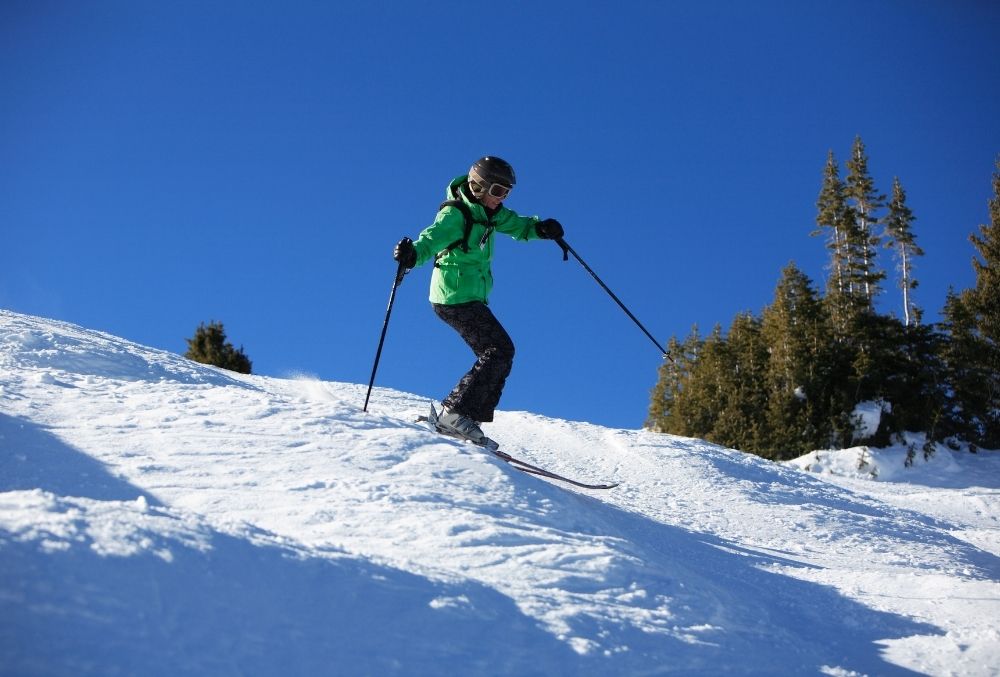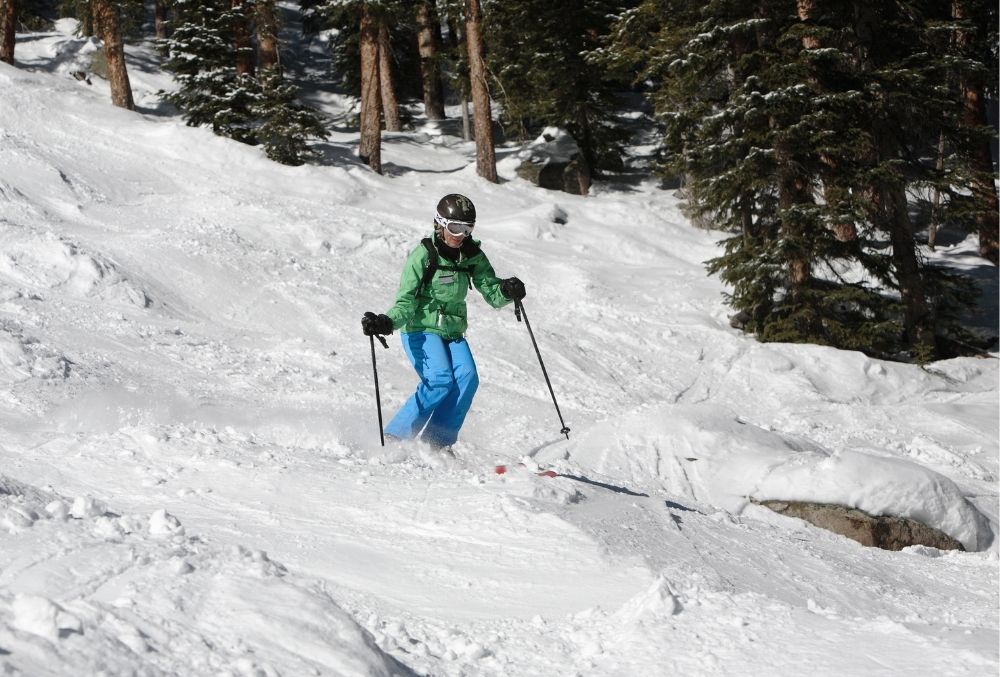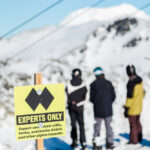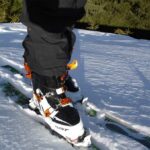Moguls are an unfortunate and unavoidable part of a skier’s life, and their appearance is something many people find overwhelming, intimidating, and often very miserable.
It’s easy to see why too, as moguls are hard to navigate, and pose a significant challenge to beginners and even intermediate skiers who have never had to navigate them before. They are also awkward to ski on and around and put a lot of strain on the body of skiers as well as their fitness levels.

Regardless of your skill or experience level, being able to face moguls, even if they are small, is essential to building confidence as a skier, and avoiding them will severely limit the runs you can ski and where you can go which will, in turn, reduce your fun and exploration during a skiing trip, which can be very frustrating.
Thankfully, moguls aren’t as scary as they seem, and with the right equipment, technique and attitude you can successfully negotiate them and massively improve your skiing and your confidence in your skiing at the same time.
In this guide we’re going to look at how to ski moguls, specifically focussing on the key techniques and tips to use so you can make skiing them as safe and smooth as possible, even while everyone else is stumbling and panicking around you!
What Are Moguls?
Moguls are basically a series of fairly large bumps and lumps in the surface of a piste, which are created by years and hundreds of thousands of skiers successively turning on a ski slope.
The lumps are created by the snow being compacted and compressed during these turns and have basically created engraved lines and ditches in the slope which are very difficult to navigate and which look very intimidating.
This is because skiing over moguls without being able to navigate them properly will almost always lead to a fall as the extremely uneven surface lifts skiers up and unbalances them, or forces you into situations where your skis and your technique are placed under extreme duress.
Turning in these ruts as well as stopping and finding your way through them is difficult, but not impossible, as we’ll highlight below!
Challenges Of Skiing Moguls
Maintaining Balance
One of the main challenges moguls present is how hard it is to balance within them, as the surface is just so uneven it really makes it hard to stay upright.
Maintaining Composure
Composure and concentration are critically important when skiing, and moguls often claim people by rocking their composure and messing up their rhythm and concentration.
Timing
Learning how to time your turns and movements to navigate moguls is difficult, and arguably the hardest part of getting used to skiing them, however with some practice you will be able to learn how to do this quite effectively.
How To Ski Moguls
Now let’s take a look at the key tips on how to ski moguls effectively!

Use Short Turns
One of the most important aspects of skiing a mogul is to ensure you use short, controlled turns, particularly on moguls which are particularly steep and severe.
You’re going to need to follow the tracks of the grain, as skiing over the bumps is very challenging and can often only be done by expert skiers who can leap between the bumps at speed.
Use short controlled parallel turns to stay on your line and swerve around the bumps instead of trying to fly over them!
Position Your Body
As with all aspects of skiing, proper body positioning is everything. Make sure you keep your arms high, your legs supple and bent, and your weight back in order to stay as balanced as possible in the moguls.
Pole Plant
Use your poles to plant them in the ground and help orient your body effectively and provide you with a mark to concentrate on and rotate around.
Pole planting is very effective and helps you to stay balanced as you twist and rotate through the sharp turns moguls require and should be used as often as possible particularly by newer or less confident skiers traveling at slower speeds.
Keep Your Head Up
It’s impossible to stay on the line without knowing where the line is. Keeping your head up is massively important to ensure you can see where the moguls are and where you need to turn and move, as well as maintaining good body position and keeping your weight back.
Lowering your head will often lead to you becoming confused or not seeing key obstacles or changes in the piste ahead, and is very important for avoiding hazards or fallen skiers/obstructions too.
Work On Timing
As we mentioned above, timing is everything, so work on making sure you can confidently time your turns and body position to account for the very short sharp turns moguls require you to make.
Being able to find the right rhythm and timing only comes with a lot of practice, so don’t neglect this.
Use Hockey Stops
Being able to make sudden abrupt stops when you need to is key on or in moguls, so knowing how to hockey stop effectively is key both for very sharp turns and avoiding fallen skiers or debris.
Stay Relaxed!
Many people tend to stiffen up when in tense situations such as skiing moguls, but this will always lead to a fall, as your legs and posture stiffen and stop absorbing the shocks of the bumps.
Stay relaxed mentally to keep your body relaxed and allow your posture and legs to carry you through by absorbing the bumps and turns easily and effectively.
Raise Your Hands
As mentioned before, raise your hands to help keep balance and to avoid dragging your poles, as well as making it easier to pole plant when you need to.
Practice, Practice, Practice!
The only way to learn to ski moguls is the only way to learn how to ski.
You must practice often and become comfortable with the moguls, getting used to the punishment they dish out and learning the tricks to reducing this punishment and finding your way through successfully.
Start out on bumpy blue slopes as a beginner, and slowly work your way up to routes with more moguls, then steeper and more severe ones, testing yourself and slowly increasing the difficulty level until you can eventually negotiate serious moguls with ease and confidence.
- Types of Skiing Terrains: A Comprehensive Guide for Every Skier - December 6, 2024
- Skiing Nutrition: Essential Nutritional Advice and Meal Planning for Skiers - August 15, 2024
- Backcountry Skiing Explained: Essential Tips and Gear - August 8, 2024








